Abstract
A seroprevalence study was carried out on 1757 outpatients consecutively seen in a sexually transmitted disease (STD) clinic in order to evaluate the sexual transmission of hepatitis C virus (HCV). A total of 1442 consenting patients were tested for hepatitis C, hepatitis B and human immunodeficiency virus type 1 (HCV, HBV, HIV-1) antibodies. The relations between anti-HCV, anti-HBc and anti-HIV-1 were studied. Of 73 anti-HCV positive reactions, 45 (61·6%) were confirmed by the recombinant immunoblot assay (RIBA). The proportion of individuals with anti-HCV was higher in outpatients with a history of sexually transmitted disease than without. It was 2·8% in non drug user heterosexuals and 2·9% in non drug user homosexuals. Intravenous drug users (IDU) had higher anti-HCV prevalence when a history of STD was taken into account (42·3% in subjects with STD versus 36·7% in subjects without STD). Among non drug user heterosexuals an association was found between anti-HCV and anti-HBc. These data suggest that sexual transmission of HCV occurs, although it seems to be less efficient than other parenteral modes of transmission. When a more sensitive and specific marker of HCV infection become available, a more accurate estimate of the frequency and efficiency of the sexual transmission will be possible.
Full text
PDF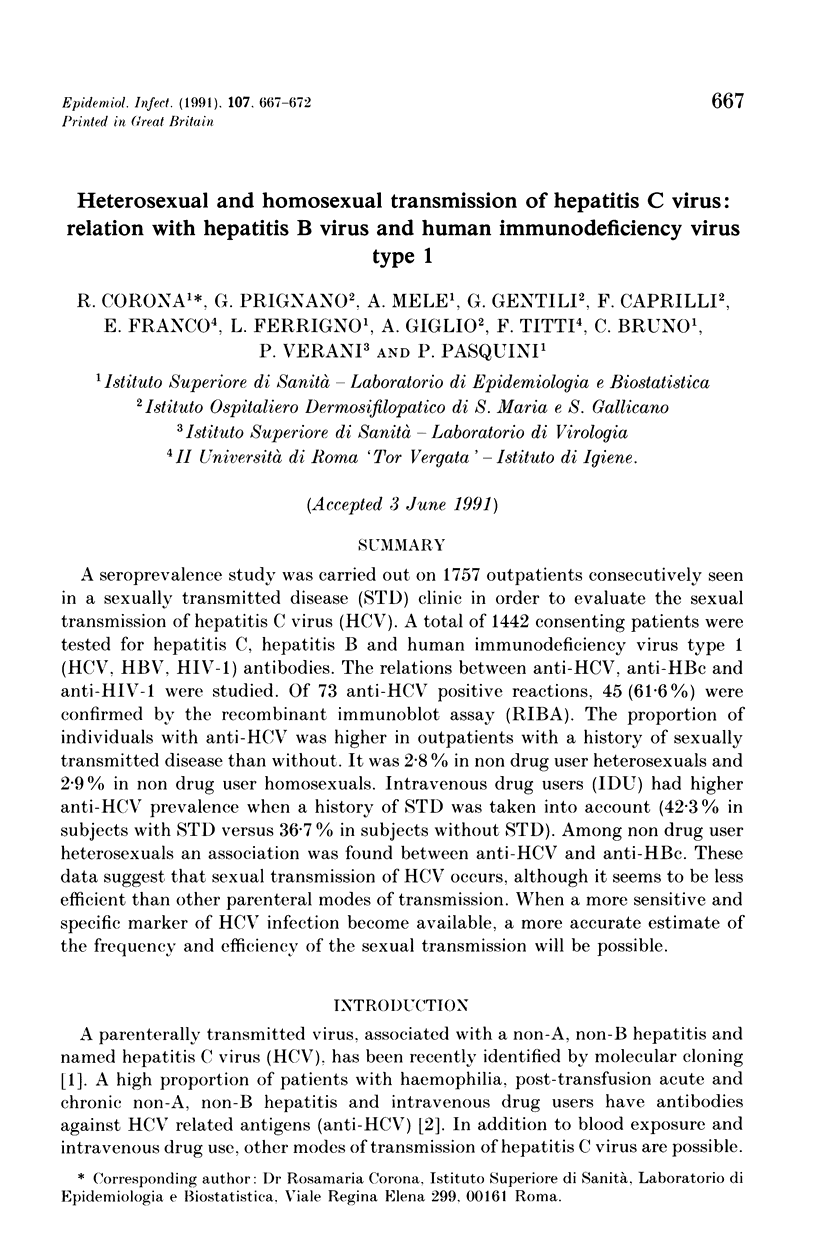
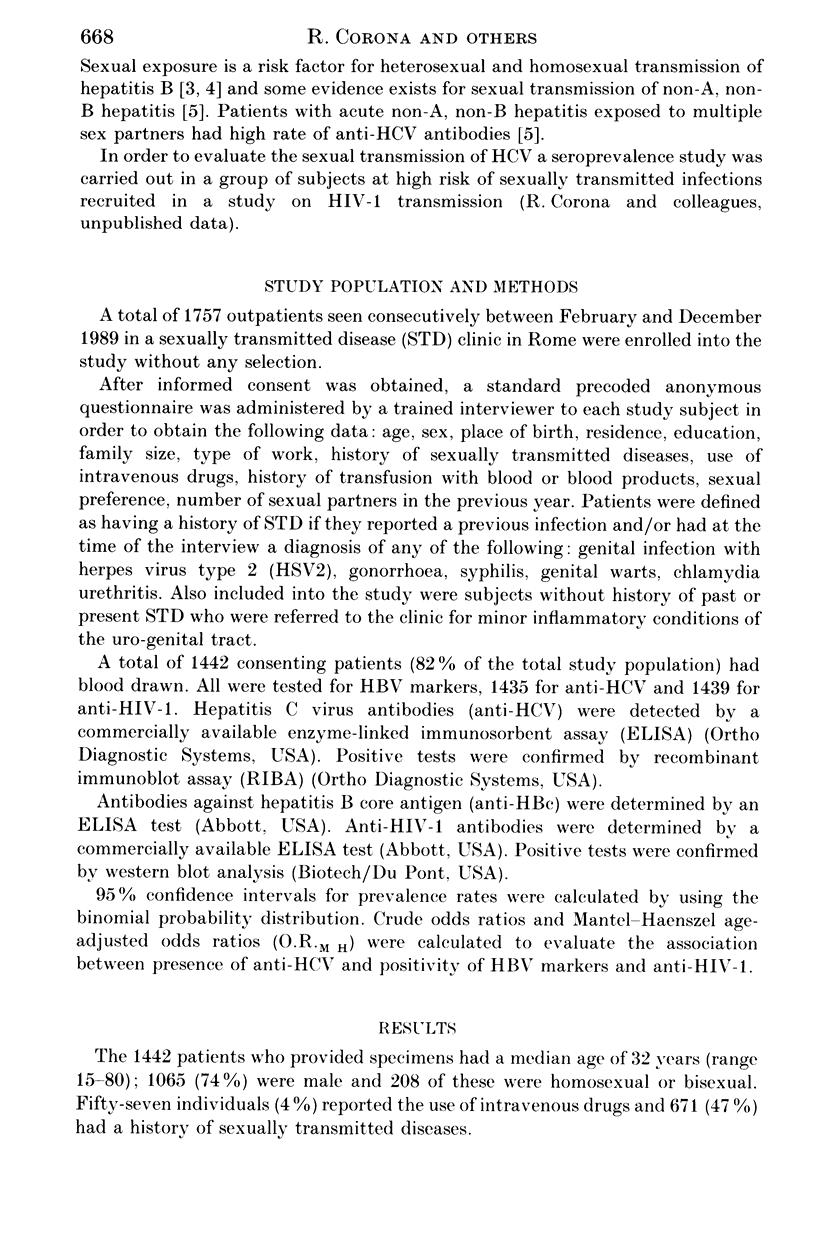
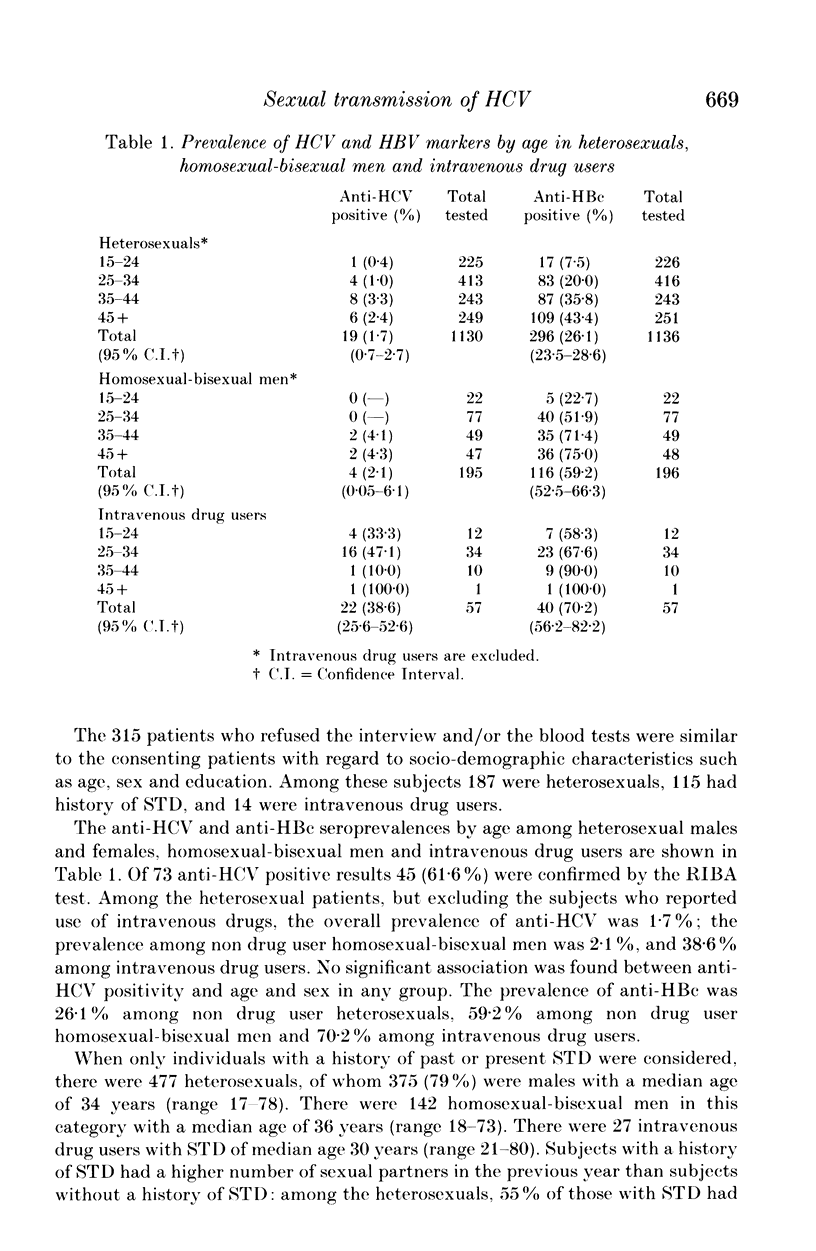
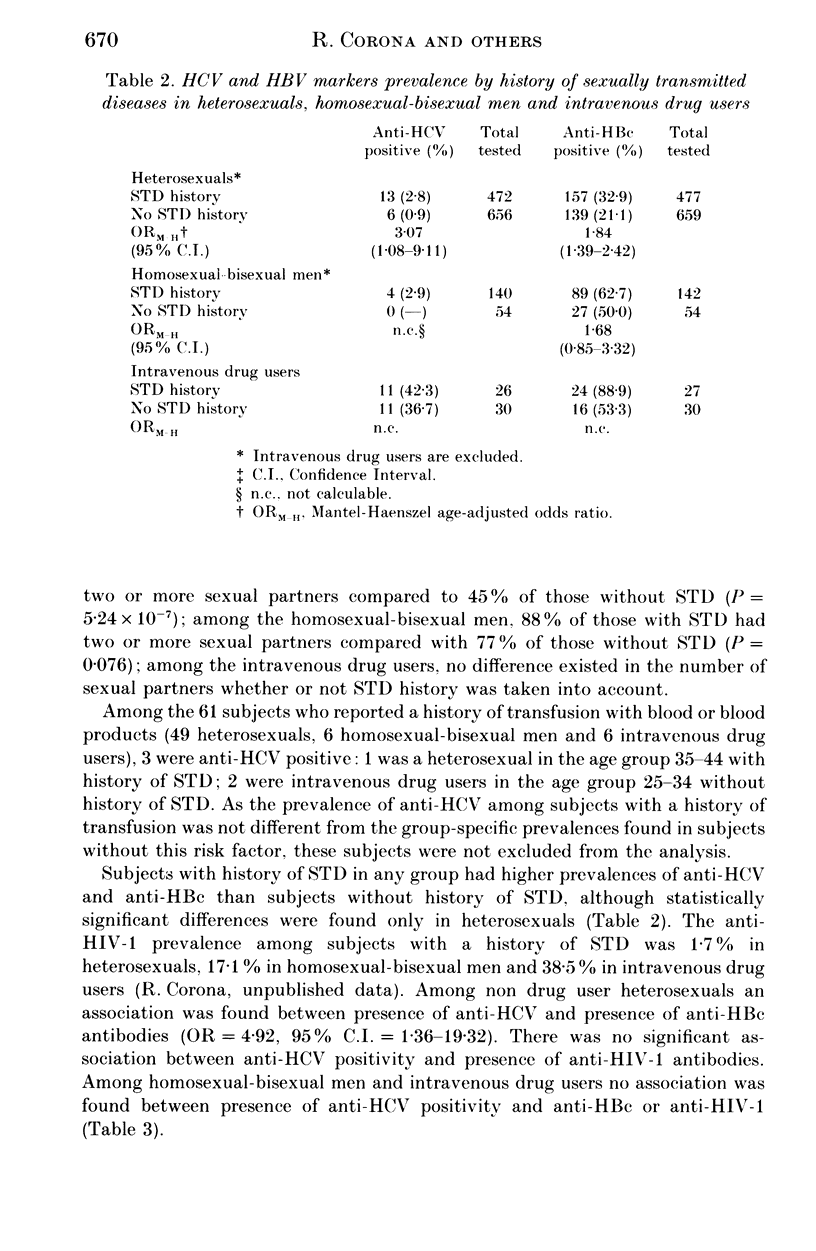
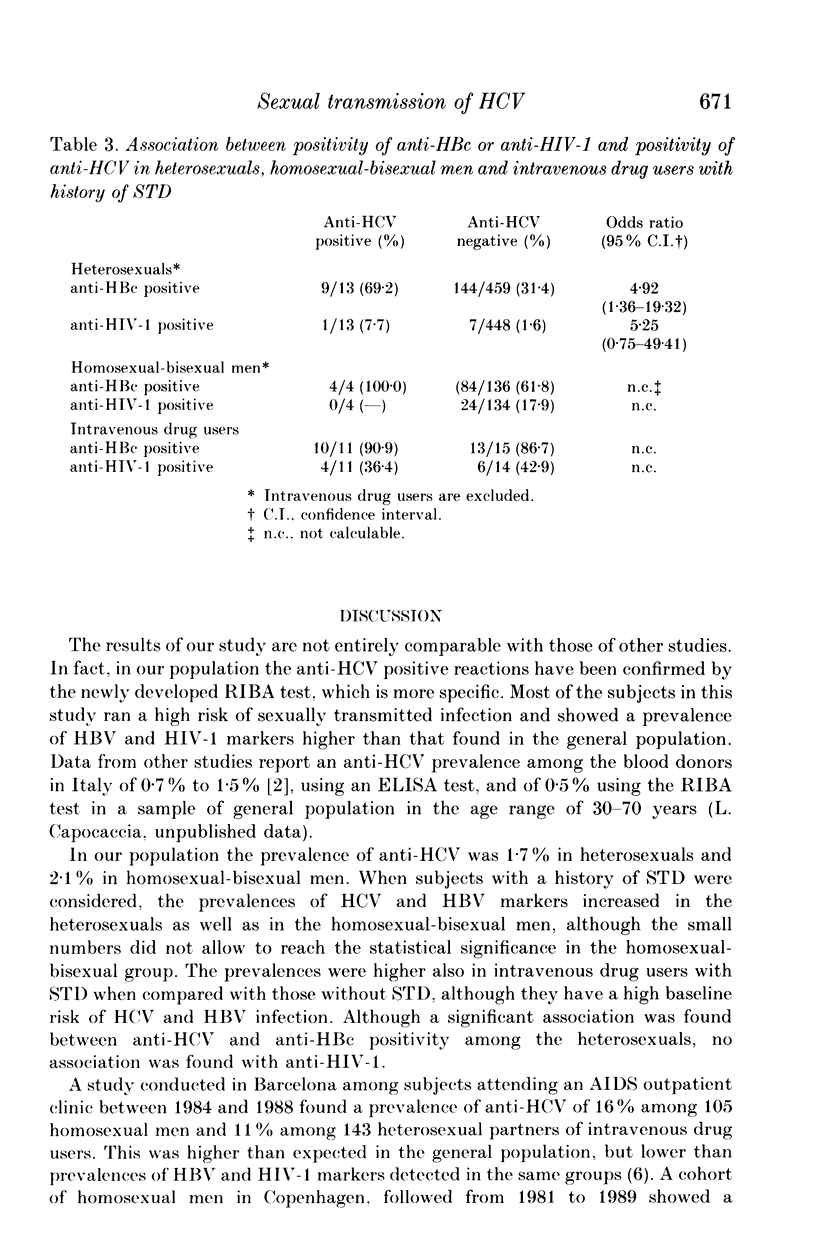
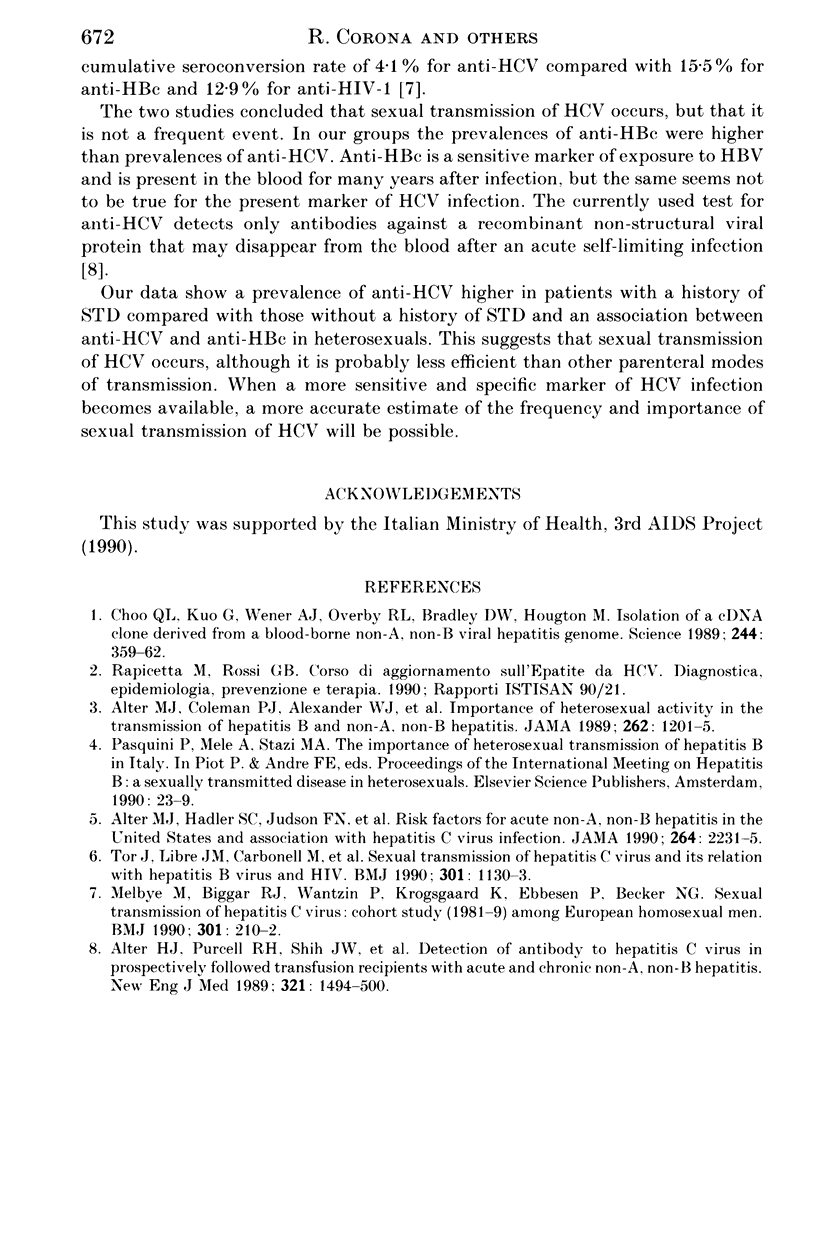
Selected References
These references are in PubMed. This may not be the complete list of references from this article.
- Alter H. J., Purcell R. H., Shih J. W., Melpolder J. C., Houghton M., Choo Q. L., Kuo G. Detection of antibody to hepatitis C virus in prospectively followed transfusion recipients with acute and chronic non-A, non-B hepatitis. N Engl J Med. 1989 Nov 30;321(22):1494–1500. doi: 10.1056/NEJM198911303212202. [DOI] [PubMed] [Google Scholar]
- Alter M. J., Coleman P. J., Alexander W. J., Kramer E., Miller J. K., Mandel E., Hadler S. C., Margolis H. S. Importance of heterosexual activity in the transmission of hepatitis B and non-A, non-B hepatitis. JAMA. 1989 Sep 1;262(9):1201–1205. [PubMed] [Google Scholar]
- Alter M. J., Hadler S. C., Judson F. N., Mares A., Alexander W. J., Hu P. Y., Miller J. K., Moyer L. A., Fields H. A., Bradley D. W. Risk factors for acute non-A, non-B hepatitis in the United States and association with hepatitis C virus infection. JAMA. 1990 Nov 7;264(17):2231–2235. [PubMed] [Google Scholar]
- Choo Q. L., Kuo G., Weiner A. J., Overby L. R., Bradley D. W., Houghton M. Isolation of a cDNA clone derived from a blood-borne non-A, non-B viral hepatitis genome. Science. 1989 Apr 21;244(4902):359–362. doi: 10.1126/science.2523562. [DOI] [PubMed] [Google Scholar]
- Melbye M., Biggar R. J., Wantzin P., Krogsgaard K., Ebbesen P., Becker N. G. Sexual transmission of hepatitis C virus: cohort study (1981-9) among European homosexual men. BMJ. 1990 Jul 28;301(6745):210–212. doi: 10.1136/bmj.301.6745.210. [DOI] [PMC free article] [PubMed] [Google Scholar]
- Tor J., Llibre J. M., Carbonell M., Muga R., Ribera A., Soriano V., Clotet B., Sabriá M., Foz M. Sexual transmission of hepatitis C virus and its relation with hepatitis B virus and HIV. BMJ. 1990 Nov 17;301(6761):1130–1133. doi: 10.1136/bmj.301.6761.1130. [DOI] [PMC free article] [PubMed] [Google Scholar]


